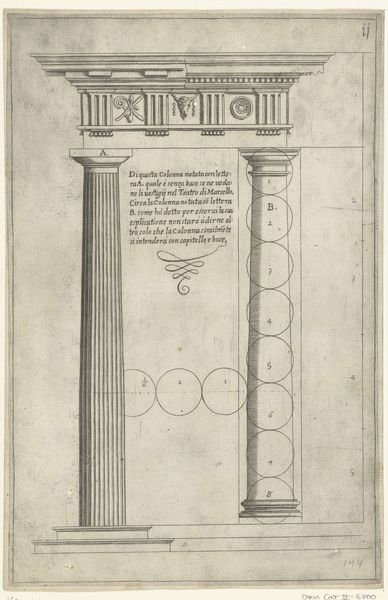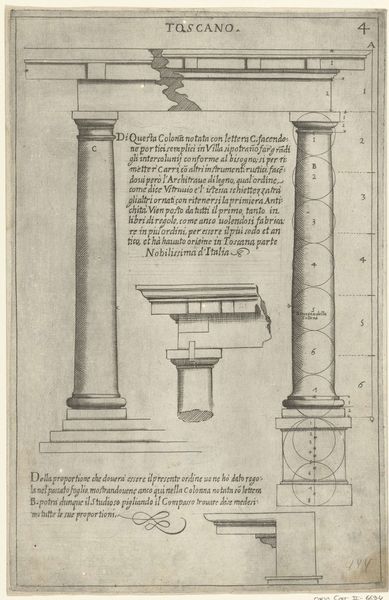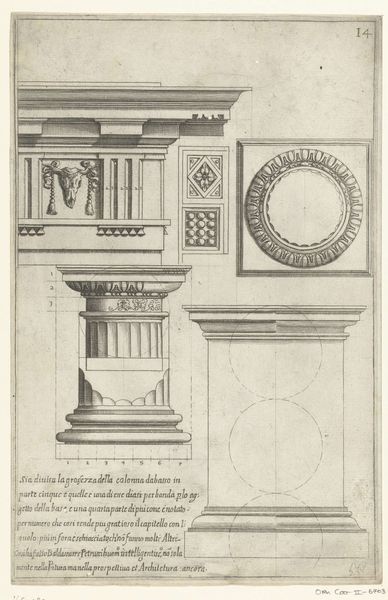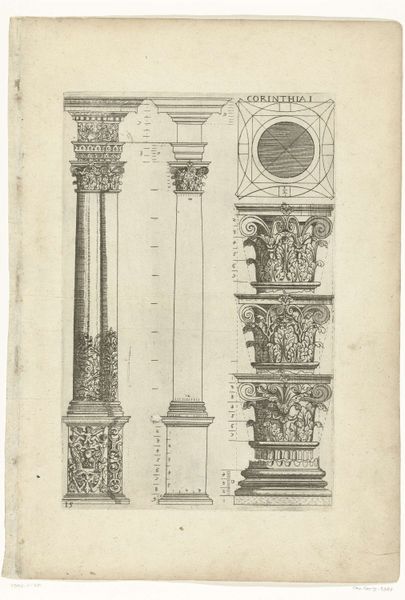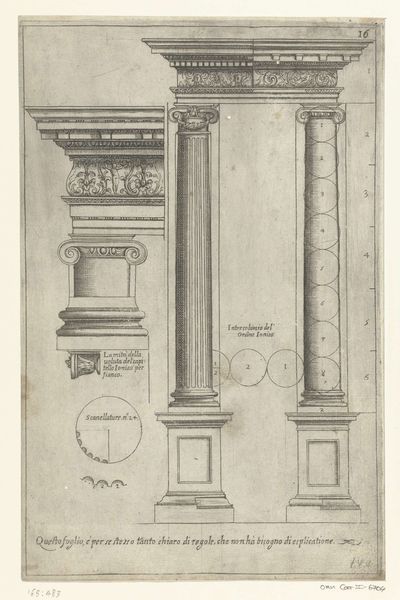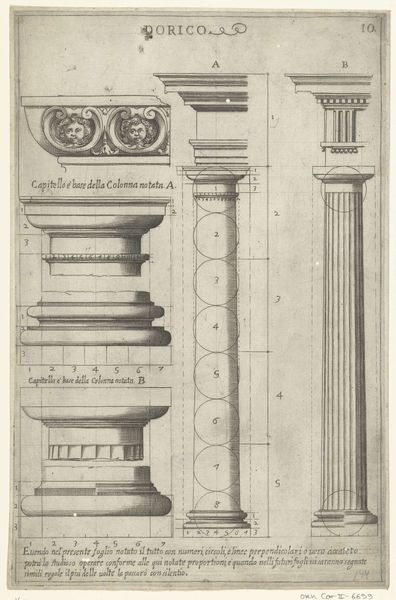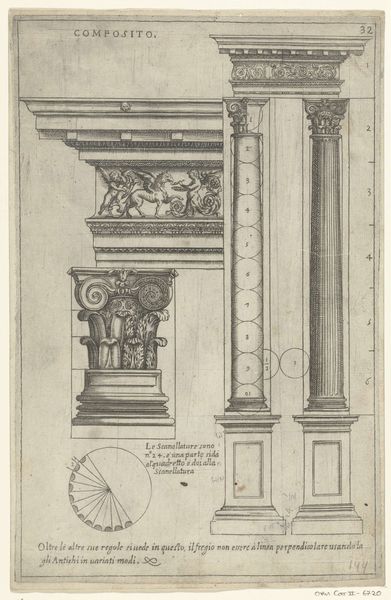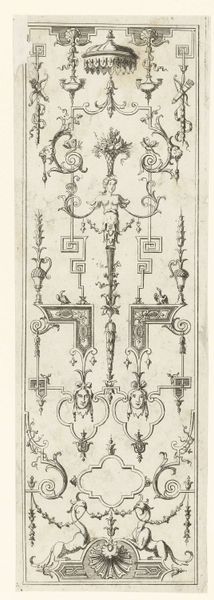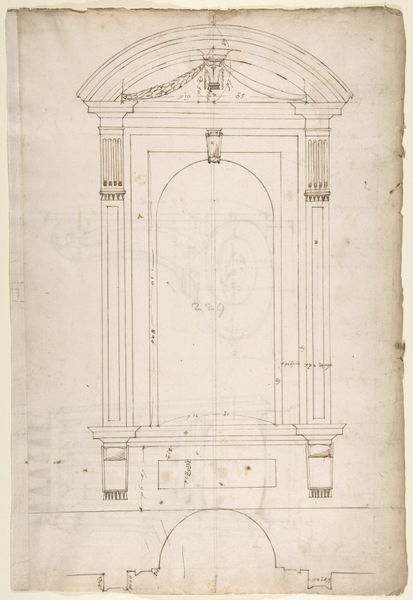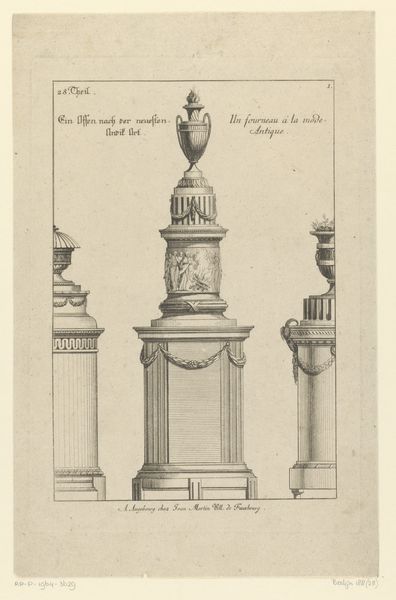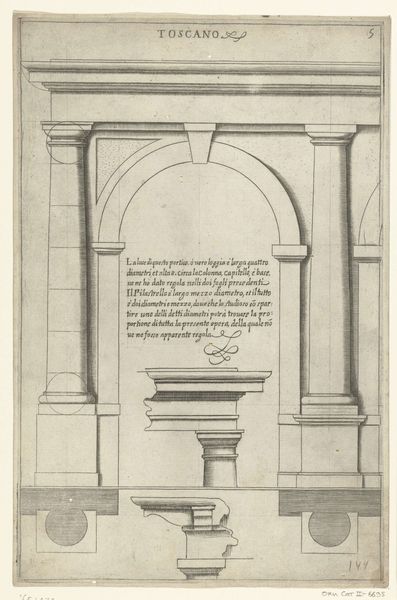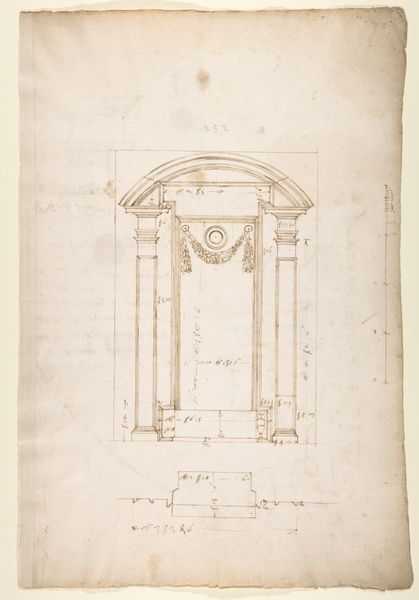
drawing, print, paper, ink, engraving, architecture
#
drawing
# print
#
paper
#
form
#
11_renaissance
#
ink
#
geometric
#
line
#
history-painting
#
academic-art
#
engraving
#
architecture
Dimensions: height 276 mm, width 178 mm
Copyright: Rijks Museum: Open Domain
Curator: Here we have "Two Doric Columns with Capitals and an Entablature," created in 1636 by an anonymous artist. It's a detailed print, combining engraving and ink on paper. Editor: My first impression is its precision. The stark lines and the almost diagrammatic quality evoke a sense of rational order and restrained beauty. The grey tones emphasize the subject matter. Curator: Indeed. It is a prime example of academic art from that period, where the focus was on accurately depicting classical architectural elements. These prints were likely created for educational purposes. Editor: I'm particularly drawn to the interplay between the detailed rendering of the columns on the right and the more schematic, diagrammatic representation on the left. It highlights both the form itself and the principles underlying its construction. Note the circles used as structural indications for how each should be created. Curator: Absolutely, and these kinds of images had an important role in the Renaissance's revival of classical architecture. The inclusion of Italian text further emphasizes this connection. We must consider how such representations shaped the built environment of the time. Editor: The text gives you all the elements needed to be constructed in your shop, with a numbering scheme for clarity. I wonder about the choice to represent only a segment rather than a full building – it really accentuates the columns' modularity. Curator: Well, focusing on the core architectural components—like these columns—enabled broader dissemination of architectural knowledge, contributing to stylistic consistency and shared understanding among builders and patrons alike. Editor: It almost feels less about artistic expression and more about the dissemination of design principles and how a classical architectural system, Doric in this instance, gets communicated to various artisans in the built environment. Curator: A very apt description, because through these drawings, a set of standards, were effectively popularized among the social groups in Northern Europe. It really speaks to how knowledge about classical forms circulated and influenced building practices. Editor: Examining it purely from the visual perspective has really shown me the graphic clarity—how it almost perfectly encapsulates a specific approach to architectural representation and construction in the 17th century. Curator: And by studying its cultural context, we gain deeper understanding how academic printmaking helped shape the adoption and transformation of classical design principles in Europe.
Comments
No comments
Be the first to comment and join the conversation on the ultimate creative platform.
